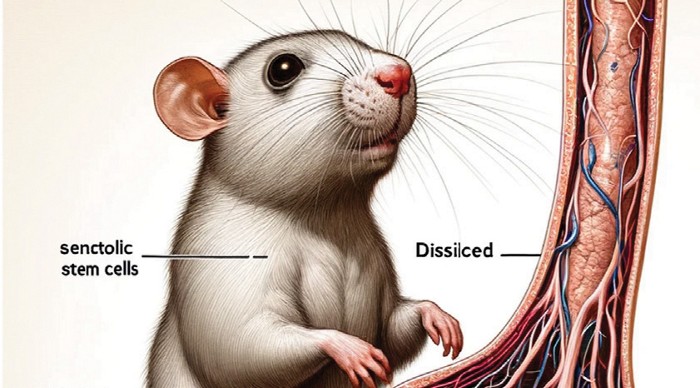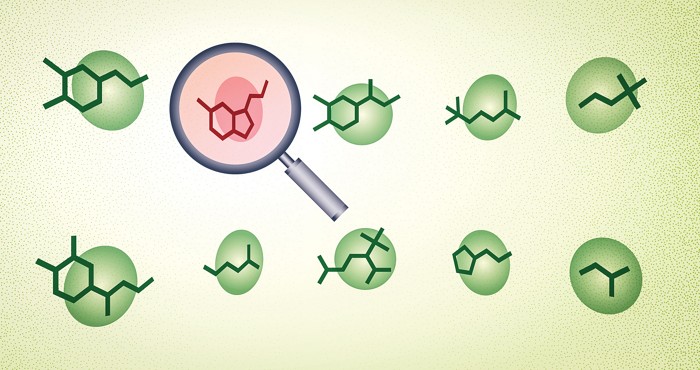Advertisement
Grab your lab coat. Let's get started
Welcome!
Welcome!
Create an account below to get 6 C&EN articles per month, receive newsletters and more - all free.
It seems this is your first time logging in online. Please enter the following information to continue.
As an ACS member you automatically get access to this site. All we need is few more details to create your reading experience.
Not you? Sign in with a different account.
Not you? Sign in with a different account.
ERROR 1
ERROR 1
ERROR 2
ERROR 2
ERROR 2
ERROR 2
ERROR 2
Password and Confirm password must match.
If you have an ACS member number, please enter it here so we can link this account to your membership. (optional)
ERROR 2
ACS values your privacy. By submitting your information, you are gaining access to C&EN and subscribing to our weekly newsletter. We use the information you provide to make your reading experience better, and we will never sell your data to third party members.
Research Integrity
French National Center for Scientific Research faulted over chemistry lab misconduct probe
Institution needs to take firmer action in case, letter writers say
by Dalmeet Singh Chawla, special to C&EN
March 7, 2023

Research integrity experts have written an open letter to the French National Center for Scientific Research (CNRS) urging it to adequately investigate a case of alleged malpractice at a chemistry lab at the institution.
Signed by more than a dozen experts on research integrity from around the world, the letter, dated Feb. 22, points to around two dozen posts on PubPeer, an online platform where scientists discuss research papers. All the PubPeer entries highlight papers co-authored by Jolanda Spadavecchia, a chemist at the CNRS.
Specifically, the PubPeer posts allege that image manipulation occurred in papers listing Spadavecchia as an author. “The problematic data are well-documented in a number of PubPeer comments on the articles,” the letter reads.
According to the letter, the CNRS requested that the articles in question be corrected rather than retracted. Moreover, the center decided to accept the researcher’s claims that there was no intentionality “despite clear evidence of a remarkable amount of manipulation and reuse of figures.” The CNRS excluded the researcher responsible for the manipulation from their duties for only one month, the letter says.
A CNRS spokesperson confirms that the institution has decided to initiate a disciplinary procedure against the researcher concerned following an investigation that was launched in February 2021.
“Several breaches of scientific integrity were actually observed,” the spokesperson says. “They relate in particular to graphs and diagrams that do not correspond to the systems studied or to the use of existing pictorial representations with no mention of the previous publications in which they originally featured.” Corrections have been recommended to replace the representations with appropriate data and add the missing references, the spokesperson says.
But critics are not convinced. “I do not believe that the institution has addressed this appropriately,” says David Sanders, a molecular virologist at Purdue University and one of the signers of the letter. “It’s unbelievable that this is not grounds for more severe consequences.”
Other signatories agree. “It appears that a lot of organizations try to keep investigations about science misconduct behind a wall of secrecy,” says microbiologist-turned-scientific-integrity-expert Elisabeth Bik. “These cases of science misconduct are often met with silence or with very slight reprimands.”
Spadavecchia did not respond to C&EN’s request for comment.
Sanders says he thinks retractions of articles are warranted in at least some of the cases. “With the nature of the problems and the frequency of the problems in this case, retraction is really the only option,” he says. Referring to the figures in the papers highlighted, Sanders notes that “you simply can’t have cut and paste curves.”
Although it’s not clear who created the figures in question, Sanders notes that “ultimately, it is the person who is running the lab that has to take full responsibility for these sorts of issues and has to be looking at the primary data when a publication is being submitted.”
Bik says the way in which cases of alleged misconduct are handled actually encourages researchers to engage in more misconduct. “If they see that the consequences for those cutting corners are very light, then I think a lot more people would be willing to take the risk,” she says.
“The rewards are so big for doing misconduct,” Bik adds. “It saves you a lot of money and it makes it possible to publish a lot more papers.”
CORRECTION:
This story was updated on March 8, 2023, to correctly present two names. David Sanders, not Brian Sanders, is a molecular virologist at Purdue University. And Elisabeth Bik, not Elisbeth Bik, is a microbiologist turned scientific integrity expert.





Join the conversation
Contact the reporter
Submit a Letter to the Editor for publication
Engage with us on Twitter